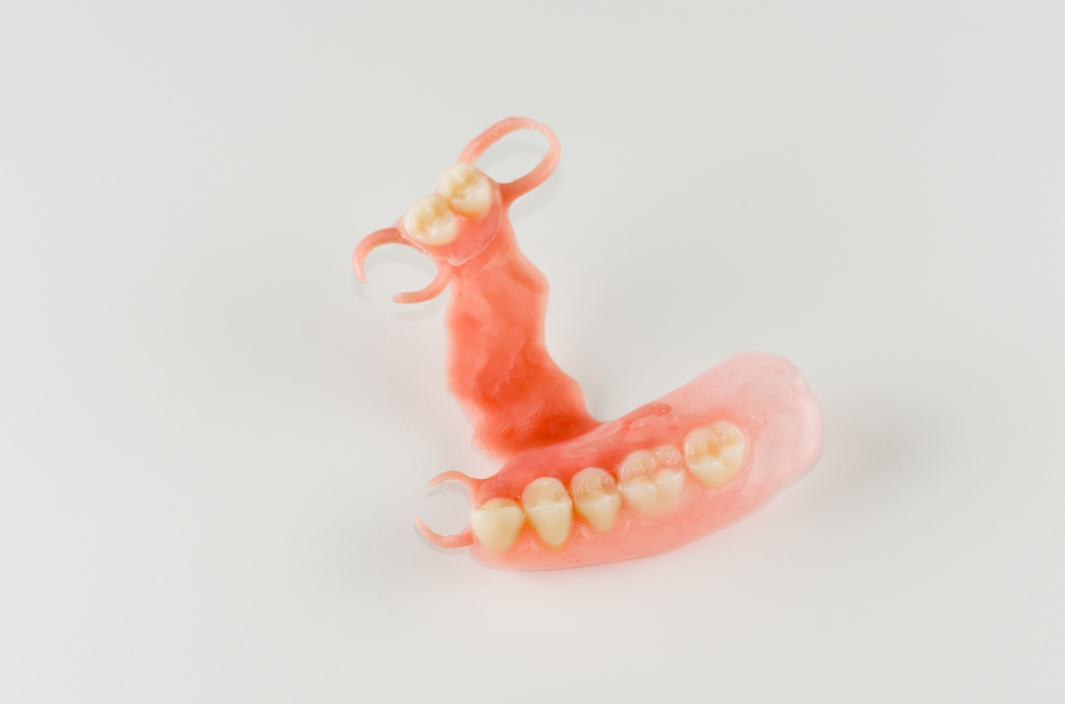Flexible dentures have gained popularity as an effective solution for patients experiencing partial tooth loss. Unlike traditional rigid dentures, flexible dentures are made from thermoplastic materials that offer enhanced comfort, fit, and adaptability. This article explores how flexible dentures improve fit and flexibility, providing a functional and aesthetic solution for individuals with partial tooth loss.

1. Understanding Flexible Dentures
Material Composition
flexible denture are typically made from nylon or other thermoplastic materials that allow them to bend and conform to the shape of the patient’s mouth. This adaptability sets them apart from conventional dentures, which are usually constructed from acrylic or metal.
Key Features of Flexible Dentures:
- Soft and Lightweight: The materials used make flexible dentures lightweight and comfortable, reducing the pressure on gums and soft tissues.
- Durability: Flexible dentures are resistant to breakage and can withstand the daily stresses of chewing and biting, providing a long-lasting solution.
- Natural Appearance: The translucent nature of the materials can mimic the look of natural gum tissue, resulting in a more aesthetic appearance.
2. Improved Fit for Enhanced Comfort
Conformity to Oral Anatomy
One of the most significant advantages of flexible dentures is their ability to conform to the unique contours of the patient’s mouth, leading to a better fit.
Benefits of Improved Fit:
- Reduced Slippage: The flexible design allows the dentures to grip the gums more effectively, minimizing the risk of slippage while speaking or eating.
- Less Irritation: Since flexible dentures adapt to the mouth’s movements, they reduce irritation and sore spots commonly associated with traditional dentures.
- Customizable Adjustments: Dentists can easily adjust flexible dentures during fittings, allowing for minor modifications that enhance the overall fit and comfort.
3. Enhanced Functionality and Flexibility
Dynamic Performance
Flexible dentures offer superior functionality compared to traditional options, making them a practical choice for individuals with partial tooth loss.
Functional Advantages:
- Improved Chewing Efficiency: The flexibility of the material allows for better distribution of biting forces, enabling patients to chew a wider variety of foods comfortably.
- Natural Movement: Flexible dentures mimic the natural movement of gums and teeth, allowing for a more natural bite and jaw function.
- Speech Clarity: The comfortable fit of flexible dentures supports proper tongue placement, leading to improved speech clarity and confidence in communication.
4. Aesthetic Benefits
Discreet Appearance
Flexible dentures are designed to blend seamlessly with the patient’s natural teeth and gums, providing a more aesthetic solution for partial tooth loss.
Aesthetic Features:
- Translucent Materials: The use of translucent thermoplastic materials creates a natural look that closely resembles gum tissue, making them less noticeable than traditional dentures.
- Tooth Shade Matching: Flexible dentures can be customized to match the color and shape of existing teeth, enhancing the overall aesthetic outcome.
- Fewer Visible Clasps: Unlike traditional partial dentures that often use metal clasps for retention, flexible dentures can incorporate flexible extensions that are less visible, improving cosmetic appeal.
5. Easy Maintenance and Care
Simplified Cleaning Process
Caring for flexible dentures is relatively straightforward, which contributes to their appeal among patients.
Maintenance Advantages:
- Less Staining: Flexible materials are less prone to staining than acrylic, allowing for easier maintenance of aesthetics over time.
- Simple Cleaning: Patients can clean flexible dentures with mild soap and water, making it easy to maintain oral hygiene without the need for specialized cleaning solutions.
- Durable and Long-Lasting: The robust materials used in flexible dentures resist wear and tear, leading to a longer lifespan compared to traditional dentures.
6. Psychological and Social Benefits
Boosting Self-Esteem and Confidence
The enhanced comfort, functionality, and aesthetics of flexible dentures contribute to improved self-esteem and social confidence for individuals with partial tooth loss.
Emotional Impact:
- Increased Confidence: The natural appearance and comfortable fit of flexible dentures allow patients to smile, speak, and eat confidently in social situations.
- Reduced Anxiety: Patients are less likely to worry about their dentures slipping or causing discomfort, leading to a more relaxed and enjoyable experience in social settings.
- Improved Quality of Life: By restoring function and aesthetics, flexible dentures enhance overall quality of life, allowing individuals to engage more fully in their daily activities.
Conclusion
Flexible dentures are an innovative and effective solution for individuals experiencing partial tooth loss. Their unique materials and design improve fit and flexibility, leading to enhanced comfort, functionality, and aesthetics. With the added benefits of easy maintenance and positive psychological impacts, flexible dentures represent a valuable option for patients seeking to restore their smiles and improve their quality of life. As dental technology continues to advance, flexible dentures will likely play an increasingly important role in prosthodontics, offering a comfortable and effective solution for those in need of partial tooth replacements.


